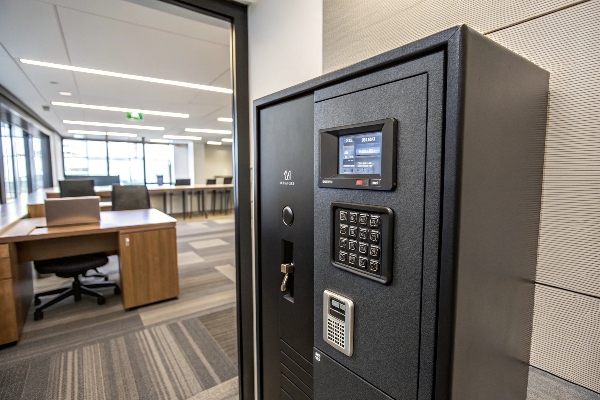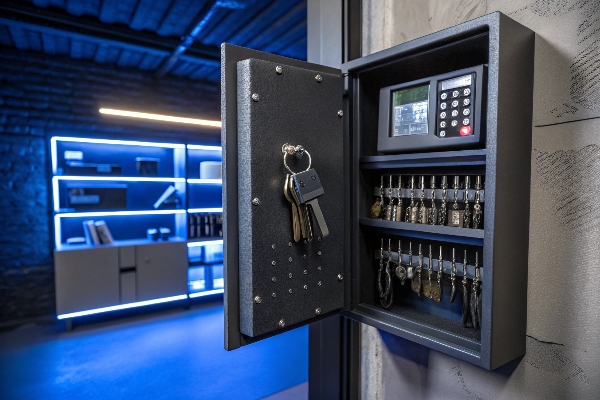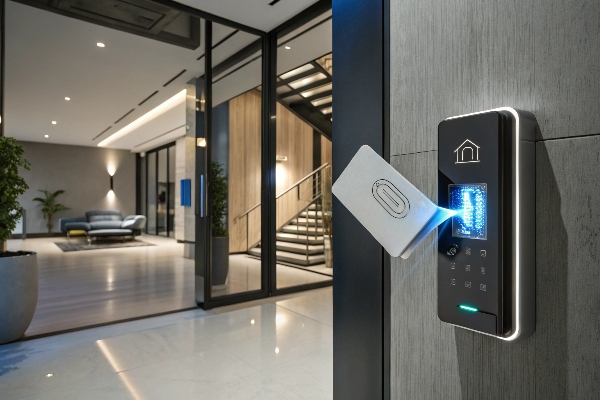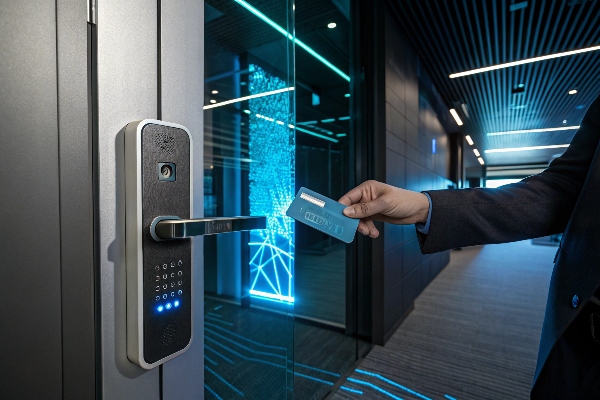
Managing multiple keys efficiently can be a challenge, especially in businesses, hotels, or large facilities. Traditional key storage methods often lead to security risks or misplaced keys.
Electronic key cabinets1 provide a secure and organized way to store and manage keys. They use digital controls, authentication methods, and tracking systems to regulate access and prevent unauthorized use.
Understanding how these cabinets work can help businesses improve security and efficiency.
What is the purpose of a key cabinet?

Keys are essential for accessing secured areas, vehicles, and equipment. However, without proper storage, they can be easily lost or stolen.
The main purpose of a key cabinet is to securely store and organize keys, ensuring that only authorized individuals can access them when needed. This reduces theft risks and improves accountability.
Key Cabinet Functions:
- Organized Key Storage – Prevents lost or misplaced keys.
- Controlled Access – Limits who can take specific keys.
- Enhanced Security – Reduces unauthorized key usage.
- Tracking & Monitoring – Records who accessed which key and when.
- Efficient Key Management – Saves time in retrieving and returning keys.
Traditional key cabinets use physical locks, while modern electronic versions add digital security features for improved control.
What are electronic keys used for?

Electronic keys are increasingly replacing traditional metal keys in homes, offices, and industries. They offer better security and convenience.
Electronic keys are used for access control in buildings, vehicles, and secure storage. They work with digital authentication systems2 to ensure only authorized users can unlock doors, cabinets, or machinery.
Common Uses of Electronic Keys:
| Application | Purpose |
|---|---|
| Office Buildings | Controls employee access to rooms or storage areas |
| Hotels | Replaces traditional room keys for guests |
| Vehicle Fleets | Manages access to company-owned cars or trucks |
| Lockers & Safes | Provides secure and trackable access |
| Industrial Facilities | Limits entry to restricted zones |
Electronic keys improve security by eliminating the risk of unauthorized duplication. They can also be remotely deactivated if lost or stolen.
How does a digital key work?

Unlike traditional metal keys, digital keys rely on electronic authentication3 to grant access. They can be in the form of smart cards, RFID tags, mobile apps, or biometric systems.
A digital key works by transmitting an encrypted signal to an electronic lock, verifying the user’s identity, and granting access if authentication is successful. These keys can be managed remotely and assigned to specific users.
How Digital Keys Operate:
- Authentication – The user presents the key (card, fob, or app) to the reader.
- Verification – The system checks credentials against a database.
- Access Granted/Denied – If valid, the lock opens; otherwise, access is denied.
- Logging & Tracking – The system records who used the key and when.
Types of Digital Keys:
| Type | How It Works |
|---|---|
| RFID Key Cards4 | Uses radio frequency to communicate with locks |
| Biometric Keys5 | Uses fingerprint or facial recognition |
| Mobile App Keys | Uses Bluetooth or NFC for unlocking |
| Smart Key Fobs | Wireless devices that unlock with proximity |
Digital keys are widely used in modern security systems because they reduce the risks associated with lost or copied traditional keys.
Conclusion
Electronic key cabinets help organizations manage keys securely and efficiently. They use digital authentication to regulate access and track key usage. Digital keys, whether RFID cards, mobile apps, or biometrics, enhance security and convenience.
-
Explore how electronic key cabinets enhance security and efficiency in key management, offering a modern solution to traditional key storage challenges. ↩
-
Discover the role of digital authentication systems in enhancing security measures, ensuring only authorized access to secured areas and assets. ↩
-
Understanding electronic authentication can help you grasp the security mechanisms behind digital keys, ensuring you choose the right system for your needs. ↩
-
Exploring the benefits of RFID Key Cards can help you decide if this technology is suitable for your security requirements. ↩
-
Learning about the security level of Biometric Keys can help you understand why they are considered a superior option for access control. ↩

